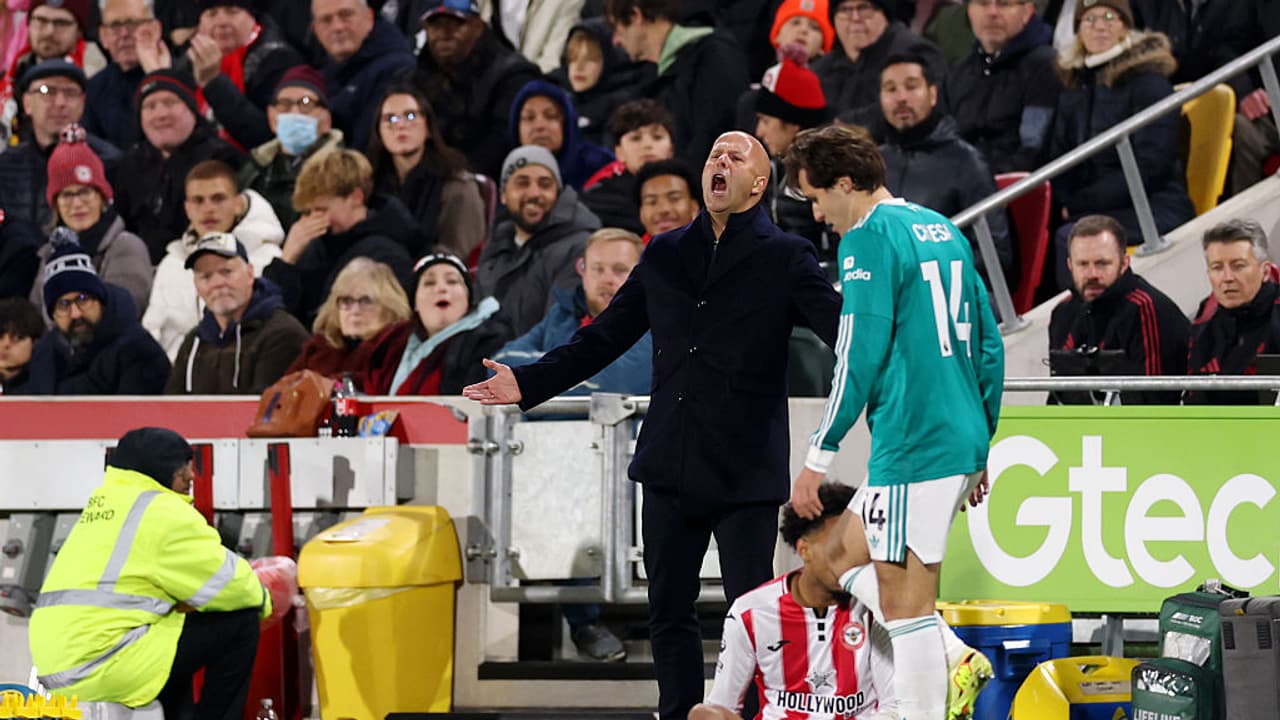After a title-winning inaugural season, Arne Slot’s Liverpool is now grappling with a severe downturn. The team is struggling with a disjointed attack, waning pressing intensity, and defensive vulnerabilities.
Under Arne Slot’s leadership, Liverpool secured the league title in his inaugural season, thanks to a clear tactical approach and a cohesive team identity. However, the landscape has dramatically shifted after a summer marked by significant squad changes. The current Liverpool squad, grappling with seven losses in their last ten matches, struggles to mirror the dominance and clarity of the previous season.
Slot publicly acknowledged the tactical brilliance of Arsenal under Mikel Arteta, noting their ability to employ numerous dynamic formations from a standard 4-3-3 base. Liverpool attempted similar versatility, adding new attacking options and shifting defensive profiles, signaling intentions to broaden tactical adaptability.
Despite ambitions for greater dominance and emphatic victories, Liverpool’s direction contrasts sharply with the prevailing Premier League trend. This season, physicality, directness, and set-piece effectiveness define success, whereas Liverpool’s style has become less coherent. The team now faces identity issues and widespread instability across all positions.
Last season, Liverpool’s offense was prolific, netting 86 Premier League goals—outperforming the third-ranked Manchester City by fourteen. Consequently, the acquisition of forwards like Alexander Isak and Hugo Ekitike, alongside midfielder Florian Wirtz and right-back Jeremie Frimpong in place of Trent Alexander-Arnold, promised continued offensive firepower. However, the current campaign reveals an attack hampered by disjointed play, reduced pace, and a loss of sharpness in front of goal.
Persistent challenges in match dynamics are evident. Liverpool spent only 16% of league minutes trailing last season, but this figure has surged to 36% this season. Frequent deficits have handed opponents the tactical upper hand, allowing them to play with less pressure and restrict Liverpool’s attacking fluidity.
Adjustments
A key strategic adjustment concerns Ryan Gravenberch’s role. Previously central to progression, he now oscillates between a situational back three role—dropping between centre-backs to avoid close marking—and a more advanced position in the right half-space. This creates unpredictability for opponents and has been notably effective in crucial wins, as affirmed by Gravenberch’s own comments on increased freedom in midfield.
This rotation of midfield pivots provides a tactical seed of doubt to opposing pressing strategies and theoretically enables higher full-back positioning to press opponents wide, supported by an extra defender in possession. Yet, it also depletes central midfield numbers, forcing wider play that opponents exploit to shift their defensive shape effectively.
Consequently, Liverpool’s build-up has sometimes turned laboured and predictable, struggling to channel the ball swiftly to frontline attackers like Mohamed Salah, who currently experiences less ball involvement than in recent seasons.
Pass distribution maps and formation analysis illustrate a reduction in key progressive passes, especially between full-backs and wingers, weakening offensive connectivity. The new full-back duo, Conor Bradley and Milos Kerkez, function differently from their predecessors, contributing fewer progressive actions.
Midfield to attack
In midfield, increased passing output from Curtis Jones, Dominik Szoboszlai, and Florian Wirtz partially offsets Alexis Mac Allister’s decline, the latter hampered by fitness and form concerns. Mac Allister’s resurgence in select matches highlights his importance in Liverpool’s attacking transitions.
Despite a respectable average of 1.5 non-penalty expected goals per 90 minutes, Liverpool’s finishing suffers due to a decline from the previous season’s two per game, compounded by a simultaneous rise in conceding chances. Shot location data reveals a tendency to attempt less threatening, longer-range efforts compared to last season, diminishing scoring effectiveness.
Key attackers Salah and Gakpo have jointly created the highest number of big chances in the league, yet their form fluctuates, leaving questions about Slot’s utilization of a traditional No 9. Forward players Isak, Ekitike, and previous strikers Diogo Jota and Darwin Nunez struggle with involvement and holding up play, which is crucial for Liverpool’s tactical structure.
Defensive lapse and pressing
Liverpool’s foundation rests on a solid and compact defensive organization, which Slot has subtly evolved this season. The out-of-possession setup toggles between a high press and a more staggered 4-3-3 shape as needed, reflecting a pragmatic departure from Klopp’s aggressive press.
However, pressing intensity has waned, allowing teams like Manchester City to execute unchallenged long buildup plays, exposing vulnerabilities in those crucial final yards of pressing.
Luis Diaz’s departure to Bayern Munich significantly impacts defensive pressing effectiveness; his relentless ball recovery ability left a void difficult to replicate.
Conditioning and adaptation of new signings to Premier League demands remain ongoing challenges, leaving the team caught between pressing imprecision and structural vulnerabilities.
A pronounced issue is Liverpool’s difficulty countering direct, long-ball tactics prevalent in the league; they have faced the highest volume of long passes, struggling to respond consistently.
Despite Virgil van Dijk’s aerial defensive dominance and solid performances by Konate and Crystal Palace’s Marc Guehi (a near-signing), Liverpool frequently loses second-ball duels, indicating problem areas in aggression and tactical response.
Positively, Liverpool’s current point haul closely parallels the equivalent fixtures from their previous title-winning season, suggesting underlying squad quality persists.
In summary, while Liverpool faces clear tactical and personnel challenges this season, Arne Slot’s strategic initiatives combined with squad potential provide hope that stability and identity can be recovered with time and refinement.
